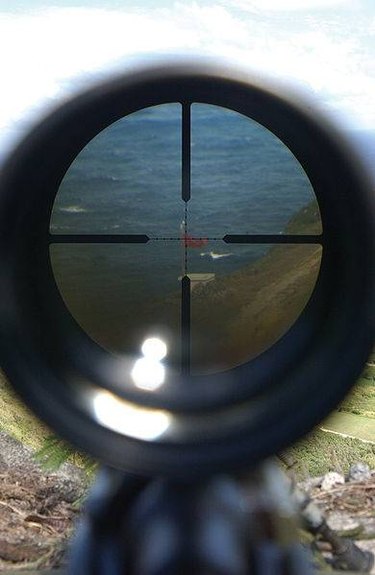

Rifle Scope Basics
The basic form of rifle scope is a simple Galilean telescope, with a concave objective lens and a convex eyepiece. These optics gather and concentrate light to magnify an image. Rifle scopes then use a reticle, or "crosshairs" as they are more commonly known, to serve as an aiming aid. Most modern scopes have adjustable magnifications, as well as mechanical compensation for shooting problems like windage and bullet drop. For accurate shooting, a rifle scope must be properly aligned using a device called a boresighter.
Rangefinding Principles
Video of the Day
A way to find range in the field is to make an estimate using a simple principle: the rate at which an object appears larger or smaller is proportional to its distance. If there is an object on the field and a rough estimate can be made as to its size--such as a fence post or corn stalk--then its apparent size can be used to make a guess about how far away it is. Rangefinder reticles use the same principle.
Video of the Day
Rangefinder Reticles

The first thing to understand about rangefinding scopes is that they all have a single magnification setting at which the reticle works. For military scopes, this is usually x10, but civilian scopes often have other settings. The rangefinding reticle is useless unless the magnification is set properly. The reticle will have measuring aids marked out on it, either in the form of hatches or bars or both, that will assist the eye in making easy size measurements. These are attuned to something that is easily found by the shooter and generally the same approximate size. Many hunting scopes with rangefinding reticles use "deer chest" increments, for example. These are scaled to the average size of a deer chest. Comparing how many hatch marks or bars the deer chest occupies at the proper magnification tells the shooter how far away the target is. For example, if the deer chest occupies 1 1/4 bars, it is roughly 400 yards away. If it occupies 2 1/2 bars, it is 200 yards away.